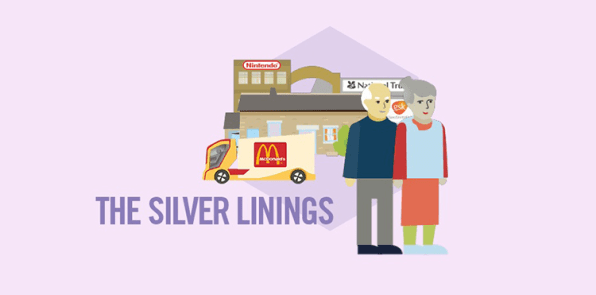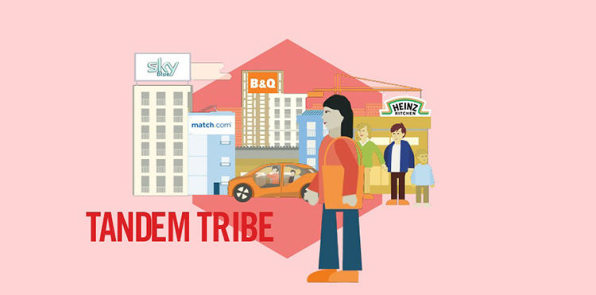What Names Will Be Popular in 2030
Over the past few generations, Western ideas about family have shifted dramatically. People wait longer to have kids and many "boomerang" back to their parents' homes before finally setting out on their own. When they do finally leave, they often scatter far away from their hometowns. The elderly, meanwhile, are sent off into old age homes instead of staying at home with their communities.
As more people move into cities, natural resources decline, climate change heats up, and the "sharing economy" continues to pick up steam, our notions of family will continue to shift. Dragon Rouge, a design and innovation firm in London, has come up with a vision of what family will look like in 2030–and how brands can respond to these future changes.
Dragon Rouge imagines five different types of families of the future: the Multi-Gens, the Silver Linings, Ruralites, the Tandem Tribe, and Modular Movers. The firm also work out how different brands might service each family type (Dragon Rouge tells us that just one of the brands listed is a client).
Multi-Gens
The Multi-Gens are exactly what they sound like–multiple generations of families living together. In some respects, the Multi-Gens are a throwback to the not-so-distant past, when it was the norm to have old and young living together. But this concept of family has a futuristic twist, with a "cloud-based family hub" that allows family members to divvy up chores and financial transactions (the firm imagines the cloud company SAP will power said hub). Meanwhile the local Marks & Spencer department store (this is the U.K., after all) has been converted into a combination cafe, store that both shares and rents items, and maker-space outfitted with the requisite 3-D printer.
Some of these trends are already starting to catch on, minus the futuristic touches. Some families are housing the elderly in so-called "granny pods" adjacent to their homes.
Silver Linings

The Silver Linings families live in community-centric villages for active older people that offer amenities like yoga and fitness classes. In Dragon Rouge's vision, McDonald's uses its large distribution network to buy fresh produce and distribute it to communities or sell it in its products (it's kind of hard to believe that McDonald's would do this, but hey, why not dream?).
Ruralites
The Ruralites are families living in rural areas that live at the cutting edge of technology–using 3-D printers to get replacement parts for household items and "video walls" to communicate with friends and family (this sounds suspiciously like the multi-channel video screen in Back to the Future Part II). Power provider Good Energy provides these families with renewable energy, while Virgin offers a reward program for traveling (including walking, cycling, taking the train, etc.).
Tandem Tribe

Dragon Rouge refers to single parents sharing a family home as members of the Tandem Tribe. In this vision, energy and resources are tracked individually and a larger micro-community offers shared resources, including tools and vehicles. Heinz offers communal cooking facilities, and Match.com evolves into a broader service that connects families to activities, babysitters, and other families that want to share a home.
Modular Movers
Finally, there are the Modular Movers–professionals who hop from one megacity to the other, exploring the world while they work and opting to walk and use bikes whenever possible. Like some of the other family types, this group relies on shared resources and subscription plans. Dragon Rouge imagines that GQ will move beyond the magazine business and offer fashionable outfits for lease (a number of startups are currently working on similar ideas). Gillette, meanwhile, offers a monthly subscription plan for everything from razors to deodorant.
These family unit categories all seem like logical conclusions based on today's trends. But they all make one critical assumption: that the world will continue on its current techno-utopian path without interruption. There are some major disruptive forces, like climate change, resource shortages, and unexpected technological developments, that are likely to change this path–and brands would have plenty of opportunities in those alternative scenarios, too.
What Names Will Be Popular in 2030
Source: https://www.fastcompany.com/3021818/5-visions-for-what-families-will-look-like-in-2030
0 Response to "What Names Will Be Popular in 2030"
Post a Comment